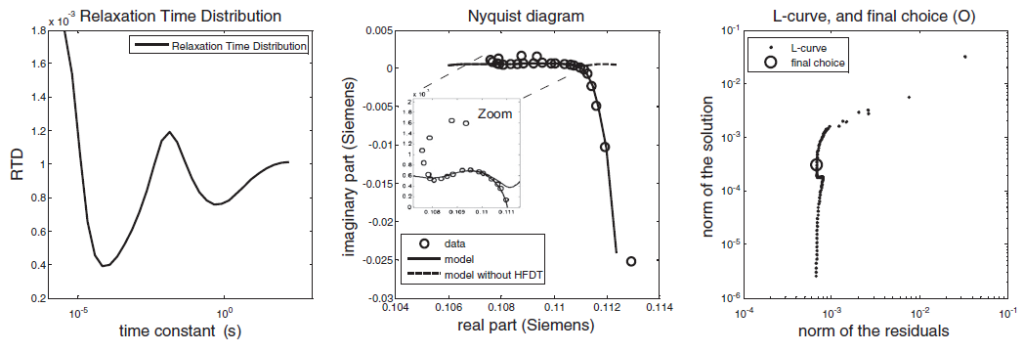Inversion of generalized relaxation time distributions with optimized damping parameter

Retrieving the Relaxation Time Distribution (RDT), the Grains Size Distribution (GSD) or the Pore Size Distribution (PSD) from low-frequency impedance spectra is a major goal in geophysics. The “Generalized RTD” generalizes parametric models like Cole–Cole and many others, but remains tricky to invert since this inverse problem is ill-posed. We propose to use generalized relaxation basis function (for instance by decomposing the spectra on basis of generalized Cole–Cole relaxation elements instead of the classical Debye basis) and to use the L-curve approach to optimize the damping parameter required to get smooth and realistic inverse solutions. We apply our algorithm to three examples, one synthetic and two real data sets, and the program includes the possibility of converting the RTD into GSD or PSD by choosing the value of the constant connecting the relaxation time to the characteristic polarization size of interest. A high frequencies (typically above 1 kHz), a dielectric term in taken into account in the model. The code is provided as an open Matlab source as a supplementary file associated with this paper.
© 2014 Elsevier B.V. All rights reserved.
(Nicolas Florsch1,2,5, André Revil3,4, Christian Camerlynck1,5)
Download: WP64_JAG_Florsch
- Université Pierre et Marie Curie, 4 place Jussieu, 75252 Paris, France
- UMI 209 “UMMISCO”, Institut de Recherche pour le Développement, France
- Colorado School of Mines, Dept of Geophysics, Golden, CO, USA
- ISTerre, CNRS, UMR CNRS 5275, Université de Savoie, 73376 cedex, Le Bourget du Lac, France
- UMR-CNRS 7619 « METIS », Paris, France

